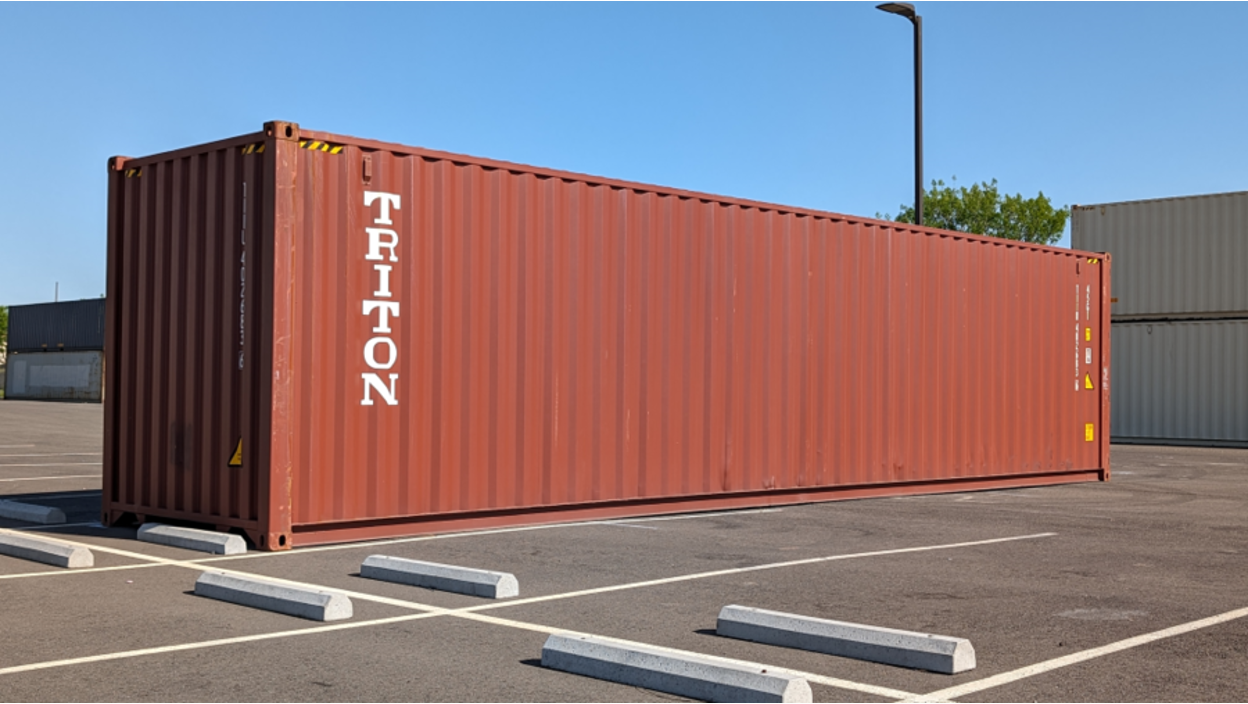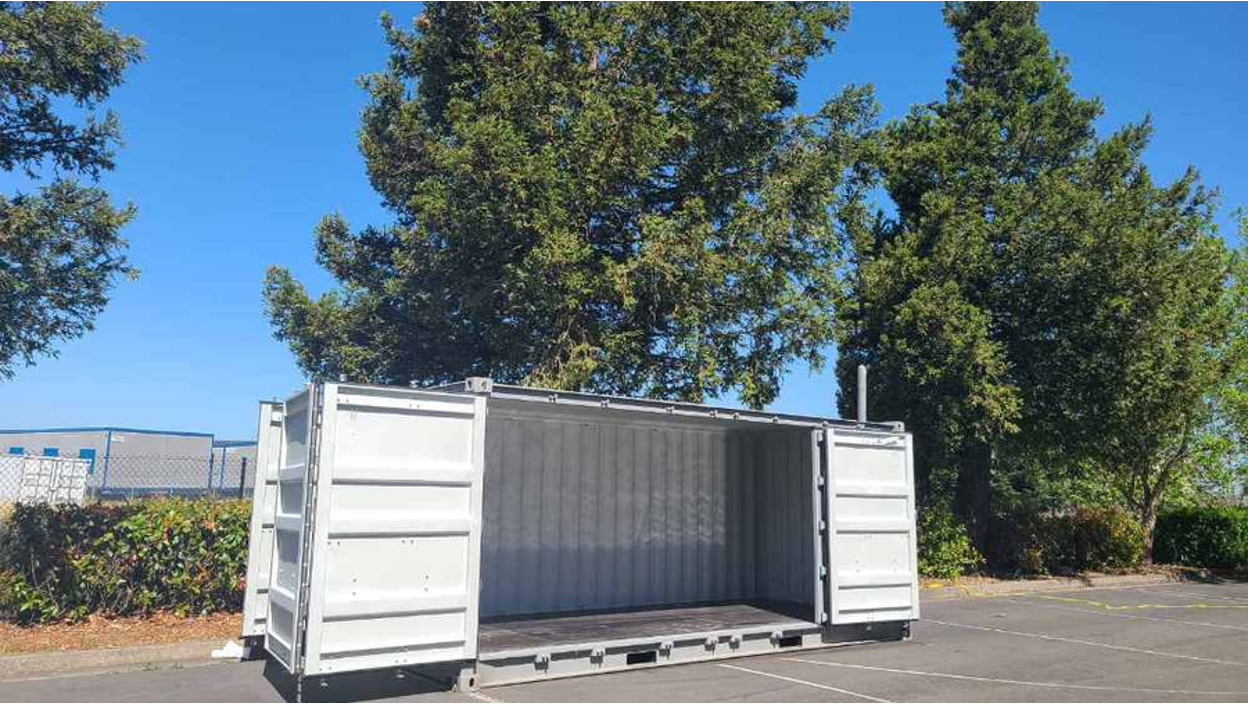Best Materials To Put Under Shipping Containers
Get a quoteBest Base Materials for Shipping Containers
Key Takeaways
- Concrete blocks provide a durable foundation for shipping containers but need proper leveling.
- Railroad ties are an affordable and eco-friendly alternative for temporary setups.
- Common foundation materials include gravel pads, piers, wood beams, and helical piles.
- The experts at Conexwest can help you choose the right foundation material and guide you in preparing the site for your container.
Types Of Foundation Materials For Shipping Containers
- Concrete Slab: A concrete slab creates a flat base that evenly distributes the container’s weight—ideal for long-term placements. A concrete base is recommended if you plan to use the container for a long time or as a permanent structure.
- Concrete Piers: Concrete piers support the corners of the container. They’re less expensive and less labor-intensive than a full concrete slab but provide excellent support.
- Gravel Bed: Gravel is a simple and effective foundation material. A gravel bed improves drainage and prevents moisture from accumulating beneath the container. It’s an affordable option for areas where the ground is relatively level.
- Railroad Ties or Wooden Beams: Railroad ties or wooden beams are budget-friendly and useful as temporary foundations.
- Steel Beams: Steel beams are a strong and durable base for sites where the foundation needs frequent adjustments. They’re relatively expensive but work well for temporary and permanent installations.
- Paving Stones: Large paving stones can be used to create a simple foundation for short-term storage. They keep the container level and form a barrier between the ground and the container to help prevent moisture buildup.
- Helical Piers: Helical piers are a specialized foundation option, often used for larger or uneven sites. They’re screwed deep into the ground and provide excellent support, especially for heavy loads in variable soil conditions.
- Asphalt Pads: Asphalt can work well if you already have an asphalt area or want a cost-effective alternative to concrete. While asphalt isn’t as strong as concrete, it has a durable, flat surface and helps with drainage.
- Stone Pad with Geotextile Fabric: A stone pad combined with geotextile fabric is highly durable. The fabric helps stabilize the stones and prevent them from sinking or shifting. This setup has excellent drainage properties and creates a relatively stable base for the container.
Conexwest, a leader in shipping and storage solutions based in Northern California, offers new, used, and refurbished containers from 10ft to 45ft, with fast delivery within 3-7 days and container fabrication options like adding shelves and locks. We serve over 10,000 customers nationwide, including prestigious clients like the U.S. Navy and Google. As an ISO 9001 and AWS-certified company, we ensure top quality and competitive pricing. |
Factors To Consider When Choosing A Foundation Material

A foundation should be able to handle the weight of the shipping container, comply with local codes, and withstand the weather
- Total Weight: The weight of the shipping container, especially when it’s modified or filled with goods, directly influences the type of foundation required. Heavier containers necessitate stronger foundations like concrete to prevent sinking or shifting.
- Soil Type: The nature and type of soil (e.g., clay, sand, gravel) can affect foundation performance. Thus, some soils may require special treatment or reinforcement to support a container adequately.
- Load Bearing Capacity: The soil's load-bearing capacity determines how much weight it can support without shifting or settling. Poor soil conditions may necessitate deeper foundations or additional support systems like piers or piles.
- Local Climate: Rainfall, snow, and temperature fluctuations can impact foundation choices. A concrete slab base is recommended in areas prone to heavy rain to prevent moisture accumulation and pest intrusion.
- Purpose of the Container: High-traffic areas may require more durable foundations like concrete slabs to withstand constant use without damage.
- Local Building Codes: Your container foundation must comply with local regulations governing construction permits, drainage requirements, and sanitation. These codes may dictate foundation types or the materials permitted in your area.
- Budget Constraints: Concrete and steel foundations are generally more expensive than gravel or wooden beams.
- Labor Costs: Installation complexity can also affect labor costs. Intricate foundations like helical piles may require specialized labor, which increases the total cost.
- Durability Requirements: Consider how long you expect to use the shipping container. Permanent installations benefit from stronger foundations like deep piers, while temporary setups might use simpler methods like gravel pads or wooden beams.
- Maintenance Needs: Some foundation types require ongoing maintenance (e.g., wooden beams susceptible to rot), while others (like concrete) may need less long-term upkeep.
Choose Conexwest For All Your Shipping Container Needs

Conexwest provides all types of containers, including specialized side-opening and mobile office containers
If you’re looking for a one-stop solution for your shipping container needs, choose Conexwest. Here’s why:
- Extensive Inventory: Our inventory of shipping containers includes new, used, and refurbished options in sizes ranging from 10ft to 45ft. Standard, refrigerated, insulated, or high cube—we have the right solution to fit your requirements.
- Quality Assurance: All our containers undergo rigorous inspections to meet quality standards. You can trust that you’re getting a durable and reliable product that will serve you well for years.
- Assistance for Foundation Preparation: Our team can guide you through the process of selecting the right foundation type based on your site conditions and intended use so that your container can be set up safely and effectively.
- Expert Support: Our team of specialists is here to assist you every step of the way. From selecting the right container to answering any questions you may have, we provide expert support to make your experience seamless.
Frequently Asked Questions (FAQs)
- Can I use my shipping container without a foundation?
While it is possible to place a shipping container directly on level ground for temporary uses, doing so can cause a few problems. Without a proper foundation, containers may sink into soft soil or become unstable due to shifting ground conditions. For long-term use or in areas with poor drainage, it's advisable to invest in a suitable foundation.
- How do I secure a shipping container to its foundation?
- Welding: A steel plate can be welded to the bottom of the container and anchored into the concrete.
- Twist Locks: Ground plates with twist locks can be bolted into concrete foundations. These locks align with corner fittings on the container for secure attachment.
- How does moisture affect shipping containers on foundations?
Moisture can lead to rust and corrosion—a proper foundation lifts the container above ground level to allow air circulation and reduce moisture buildup. This is important if you plan to use the container as a living space or to store valuable items.
- What preparation is needed before installing a shipping container foundation?
- Site Assessment: Evaluate soil conditions and drainage patterns.
- Ground Leveling: Check that the site is level. This may involve excavation or grading.
- Utility Planning: When planning your foundation layout, consider access to utilities like water and electricity.
- Can Conexwest help me customize my shipping container?
Yes, we provide extensive customization services for our shipping containers. With us, you can modify your container to include features such as windows, doors, insulation, electrical wiring, plumbing, and more.
